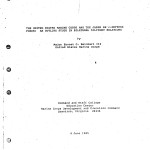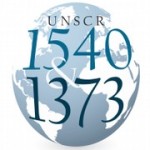Hiromichi Umebayashi, President of the Peace Depot, assesses the prospects for a Northeast Asian Nuclear Weapons Free Zone (NEA-NWFZ) and the applicability of lessons learned during the establishment of similar treaties in other regions of the world. He writes, “there are specific wisdoms to be found in the existing NWFZ treaties . . . One is related to the provision for the entry-into-force of the treaty. If one or more state parties have concern about others’ possible noncompliance with a hard-woven NEA-NWFZ treaty, one could invent a . . . certain kind of waiving system such as the one adopted in the Tlatelolco Treaty. Also, learning from the precedent of ABACC, it seems worthwhile to re-examine the possibility of South-North (North-South) Joint Nuclear Control Commission, which is stipulated by the 1992 Joint Declaration on the Denuclearization of the Korean Peninsula, or its modification, as the first step of confidence building measures in the region.”
This report is from the East Asia Nuclear Security workshop held on November 11, 2011 in Tokyo, Japan.
Papers and presentations given at the East Asia Nuclear Workshop are available here, along with the full agenda, participant list and a workshop photo gallery.



